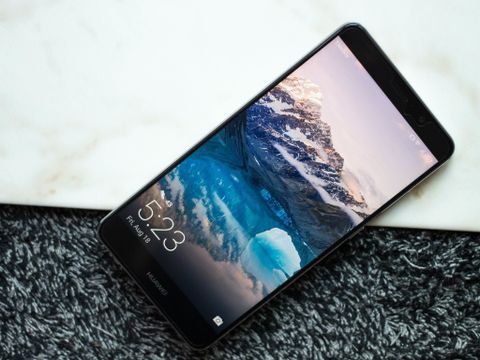Plenty can happen in nine months. A human baby gestates over the period of nine months, for example, or you can try to grow over four inches of hair. Nine months is also a good time to check in with a smartphone after its initial launch. That's plenty of time for a device to effectively gestate within the general consumer populace.
It's been nearly nine months since the Huawei Mate 9 launched globally. The phablet-sized device was Huawei's great big flagship of last year. It was deemed fast, with its homemade system-on-a-chip, and it offered great battery life and solid camera performance by way of its dual-camera system. But how has it aged since its debut? Let's check in with the Chinese company's enormous smartphone and how it fares against the current crop of competition.
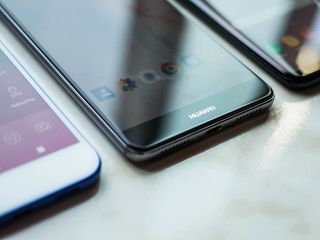
It's big
Wide body against the narrow masses
Since the Mate 9's launch, we've seen smartphones effectively shrink in size while still affording plenty of room for the screen. In that sense, the Mate 9 feels like it's already aged eons, and while it may be nearly as slim as its rivals, it's 5.9-inch 1080p display is big in comparison. Unlike the Samsung Galaxy S8 and LG G6's elongated, narrow candy bar shape, the Mate 9 is like a mini-sized tablet. Though you might appreciate the extra bezel for holding the device and typing two-handed, that's not the direction flagships are headed these days.
The Mate 9 feels like it's already aged eons.
The Mate 9 has other features working in its favor, like a rear fingerprint sensor, which is easy to reach in spite of its larger size. You can customize it to work with a variety of gestures, too, and it's still faster to use than the Galaxy S8's fingerprint sensor.
I like the Mate 9's display, even if it is merely an IPS LCD, compared to the Porsche Design variant's vibrant AMOLED display. I also like its beefy audio capabilities; the phone has a dual-speaker setup so that you can hear its strength even through Snapchat or Instagram Stories. It's excellent for podcasts, though it's still a bit tinny when you playback music at the highest volume. But it broadcasts better than the Pixel.



On the inside, the Mate 9 runs on Huawei's homemade Kirin 960 processor, which you can now also find in the Huawei P10 and Honor 9. At the time of the Mate 9's launch, it was the first mass-market chip to use ARM's new Cortex-A73 design, though now you can find a modified version of it powering the Snapdragon 835. The Kirin 960 is speedy, and with 4GB of RAM, the Mate 9 moves swimmingly through gameplay and processor-intensive apps. I can't believe it's not a Snapdragon, and that's the point, isn't it?
As for the Mate 9's 4000mAh battery — it must be the way that I'm using it because I've had to plug in this phone every other day since I switched back to it. But I will say that I've had some major issues with the Android O developer preview on my Pixel XL, so the Mate 9 has been a surefire Godsend. I can keep the screen on while waiting for my Lyft and watch YouTube TV on the ride home without fear of killing off what little battery I have left. I expected better standby time with the massive pack, but it's vastly better than what the Pixel's been offering me.
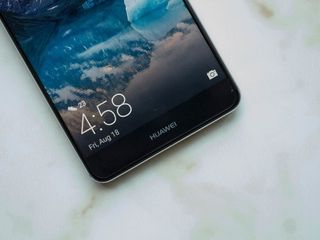
EMUI has never looked better
Not the Android you're typically used to
You've likely heard us echo it through the Android Central hallways: Huawei's software has long been its Achilles' heel, at least until EMUI 5.0 based on Android 7.0 Nougat showed up. It's what the Mate 9 is running right now, and it looks good, though some of its features won't be available if you decide to employ another launcher, like App Twin.
We've since seen EMUI 5.1 hit the market months after the Mate 9's debut, so it's weird not to have the software update yet. There are plenty of threads pointing to its existence, but nothing is confirmed for the Mate 9.

Different flavors of Android.
So what kind of Android are you getting with the Mate 9? You're getting a darker color scheme, default apps like the dialer and messaging app that aren't Google's, and Amazon Alexa (it was added on in a software update earlier this year). You're also getting the option for an application drawer, which wasn't a feature available on Huawei-made phones before, as well as themes and a vastly different notification shade. It's not as clean as the interface you'd find on the Google Pixel or even Samsung's revamped Galaxy interface, but it has features you've used before, like a night mode and multi-window mode. You can also use add-on features like the aforementioned App Twin to clone Facebook and WhatsApp and use two accounts at a time.
Fortunately, Android has this way about it that lets you customize things to your liking. I enjoy using the Mate 9 with the Evie Launcher, for instance, which lets me choose my icon pack. There are other methods you can use to get into the nitty gritty of the interface, too, if you abhor it. But I don't mind the experience of using the phone as long as I've got another launcher to spruce it up.
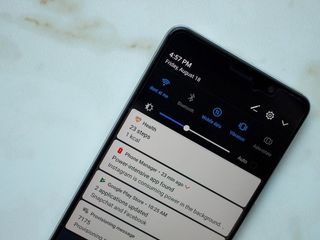
Powered by Leica
A great set of rear-facing cameras
Huawei's long been a partner with camera maker Leica, and the German company has once again exerted its influence over the Mate 9's rear-facing cameras. This phone comes equipped with dual 20-megapixel and 12-megapixel cameras. The former focuses on monochrome and the latter hones in on color. Together, they have a symbiotic relationship with the goal of getting you the best shot.






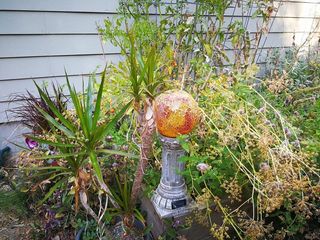

There's little information on what's happening with software updates.
The dual-lens, dual-sensor setup is efficient at capturing the mood, even if does tend to overexpose bright and sunny shots. I loved tinkering around with the wide-aperture mode turned on, and though the Mate 9's primary camera aperture doesn't go as low as the competition, it makes up for it with the aid of optical image stabilization. OIS still isn't a guarantee for most mobile phones.
The Mate 9's dual cameras also help make it capable of bokeh-like "portrait" effects. It's an impressive shooter in well-lit scenic panorama situations, too, though some scenes will look drowned out when it's overcast. You can also choose between three different color modes, including one that helps the colors pop up in an otherwise dull setting. Conversely, it can also overdo the adjustments and contribute to an overly processed photo. Pictures taken at dusk also have a tendency to come out grainy. Still, I love shooting with the Mate 9, though it's nothing compared to the shots I've managed with the Pixel XL.
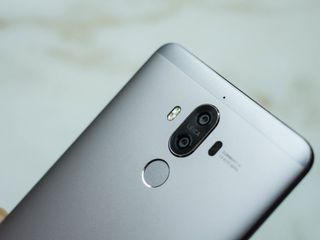
Nine months later
Mate 9 is a worthy phone with too much competition
I've received plenty of queries asking about Android-powered smartphones that are under $500. If you're on a network like AT&T or T-Mobile and you're looking for an unlocked, global device that's different than the status quo, the Mate 9 is a great deal. In addition to its giant 4000mAh battery — which, hey, will get you through a day and a half of average use without a charge — it has an impressive dual-camera setup and a beautiful 5.9-inch screen. I like its wider body, too, as it's easier to handle and multitask with than some of the newer, all-glass devices hitting the market.
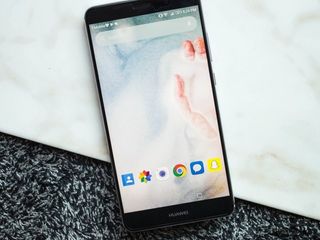
Perhaps the only caveat to the Mate 9 is that there's little information on what's happening with software updates. We're still wondering: when is EMUI 5.1 making its way over to the device? I should also note that the Mate 9 in my possession is stuck on the Android security patch from April 5, 2017. And I'm not alone, as I discovered in our forums.
Nine months on and there is already a host of smartphones worth the cash over the Huawei Mate 9. With the deals going on right now for Samsung and LG's flagship devices, you may wonder whether it's worth grabbing one of these at its current price of $450. The answer is yes, particularly if you're looking for a wide-bodied, unlocked phone to last you several trips around the earth. But there's no reason to choose this particular device over any other. If you can spare the extra cash, about $150 will net you one of the latest flagships on sale or you can nab a year-old device like the Google Pixel at a much cheaper price. Or if you'd rather stick with the Huawei family, don't forget the Honor 9 is now available at Amazon.
Florence Ion was formerly an editor and columnist at Android Central. She writes about Android-powered devices of all types and explores their usefulness in her everyday life. You can follow her on Twitter or watch her Tuesday nights on All About Android.
